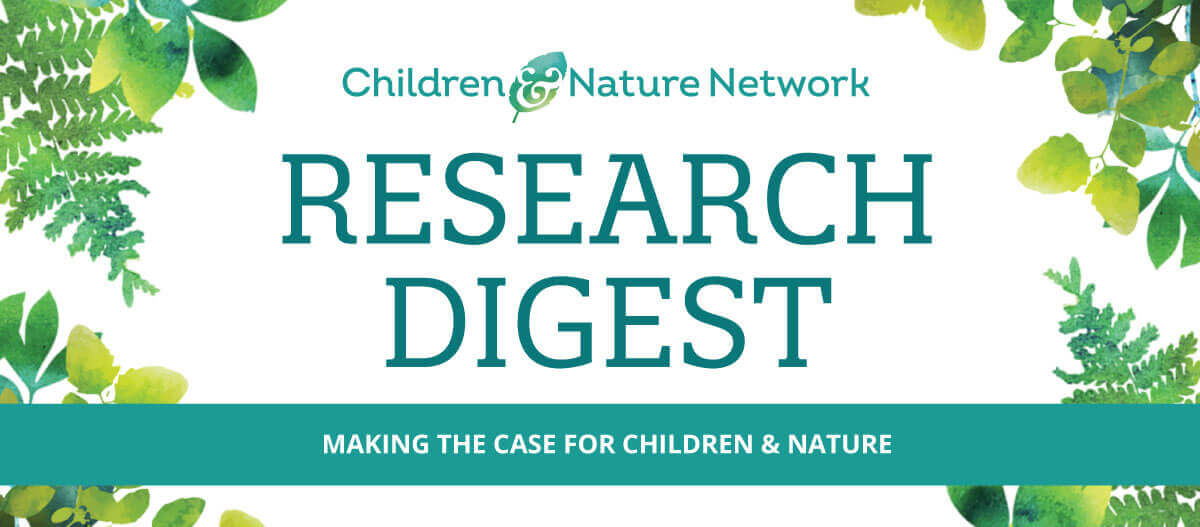Awareness of Inequitable Access
Inequities in children’s access to nature are a world-wide phenomenon, occurring in both Western and non-Western countries and in countries with both strong and weak economies. In many communities, inequitable access to nature applies to home, school, and neighborhood environments.
Socioeconomic status is one of the primary factors related to inequitable access, especially in urban environments. Urban inequity in opportunities for nature engagement can be experienced in various forms, including proximity, accessibility, and quality. Different types of nature or natural environments (green and blue spaces, managed and wild, public and private) can also play a role in equity, in that not all natural environments provide the same kinds or levels of benefit.
Vulnerable groups in some communities live near and have access to parks, but those parks are less attractive
This study in Lodz, Poland investigated whether the most or the least vulnerable residents lived near parks with greater barriers, including those related to availability, accessibility and attractiveness. Results showed that most of the city residents generally enjoy good park availability (proximity); but for the most vulnerable groups (low-income people, children and youth, seniors, and the elderly), parks lack attractiveness. Additionally, children and youth tended to have less access to parks than other age groups.
Biernacka, Łasziewicz, & Kronenberg, 2022. Park availability, accessibility, and attractiveness in relation to the least and most vulnerable inhabitants.
Certain racial/ethnic groups have fewer public transportation options to large parks in the Western U.S. than other groups
Researchers used a novel measure of public transit access to parks (the T2P index) to determine the number of large parks that residents in the 15 largest metropolitan statistical areas in the Western United States can reach by using public transit and walking within a given time. Relating those results to neighborhood-level disadvantage (income, race/ethnicity, and age) provides some evidence of environmental injustice, with Black, Indigenous, and People of Color communities having not only worse walking access to large parks, but also worse transit access to such parks compared to non-Hispanic White people.
Park et al., 2021. Transit to parks: An environmental justice study of transit access to large parks in the U.S. West.
Access to urban green space in Mexico City is linked to a neighborhood’s socioeconomic status
This study examined the equity of access to urban green space (UGS) in Mexico City at the neighborhood level. Findings showed limited access to small green spaces in most of the neighborhoods. High-poverty neighborhoods had the most pronounced limited access to UGS. Increasing UGS access in neighborhoods with higher rates of poverty may help mitigate the disproportionate negative effects experienced by more marginalized people when faced with public health emergencies such as pandemics.
Huerta, 2022. Rethinking the distribution of urban green spaces in Mexico City: Lessons from the COVID-19 outbreak.
Greater access to natural spaces and private gardens close to home may be especially important for children in more economically deprived neighborhoods
Linking Scottish children’s actual use of green space to their geocoded home address locations and their socioeconomic status showed that children (age 10-11) from more economically deprived neighborhoods spent more time in natural space closer to home than children in more advantaged neighborhoods. The fact that children of lower socioeconomic status spent more of their time in natural spaces within 100 meters of home highlights the need for quality natural spaces and private gardens in all neighborhoods. Planners should utilize this information when examining and planning neighborhoods to ensure access to natural spaces and private gardens close to home, as nearby natural places were used more frequently by children living in the most deprived areas.
Olsen et al., 2022. Socioeconomic inequality in Scottish children’s exposure to and use of natural space and private gardens, measured by GPS.
Schools in Santiago, Chile mimic the vegetation inequalities seen throughout the city
Satellite imagery was used to determine the level of vegetation on and around the grounds of more than 1,500 schools in Santiago, Chile. The data showed that private schools had higher levels of vegetation than public or subsidized schools. The study also showed that the level of vegetation on school grounds is very similar to that of the surrounding neighborhoods, with low-income areas having the least amount of vegetation. Rather than lessening vegetation inequalities, public or subsidized schools may be exacerbating the situation by mimicking the uneven distribution seen throughout the city.
Fernández, Pérez-Silva & Villalobos-Araya, 2022. Vegetation cover within and around schools in Santiago de Chile: Are schools helping to mitigate urban vegetation inequalities?
The level of greenness on school property need not reflect the environmental injustices suffered by low-income, high minority communities
A study of four school districts across North Carolina (U.S.) found that more socially vulnerable neighborhoods had less green space than less vulnerable neighborhoods. Green space at the public schools, however, was more equally distributed than in the surrounding neighborhoods and was not related to socioeconomic or racial composition of students.
Zhang et al., 2021. Equally green? Understanding the distribution of urban green infrastructure across student demographics in four public school districts in North Carolina, USA.





